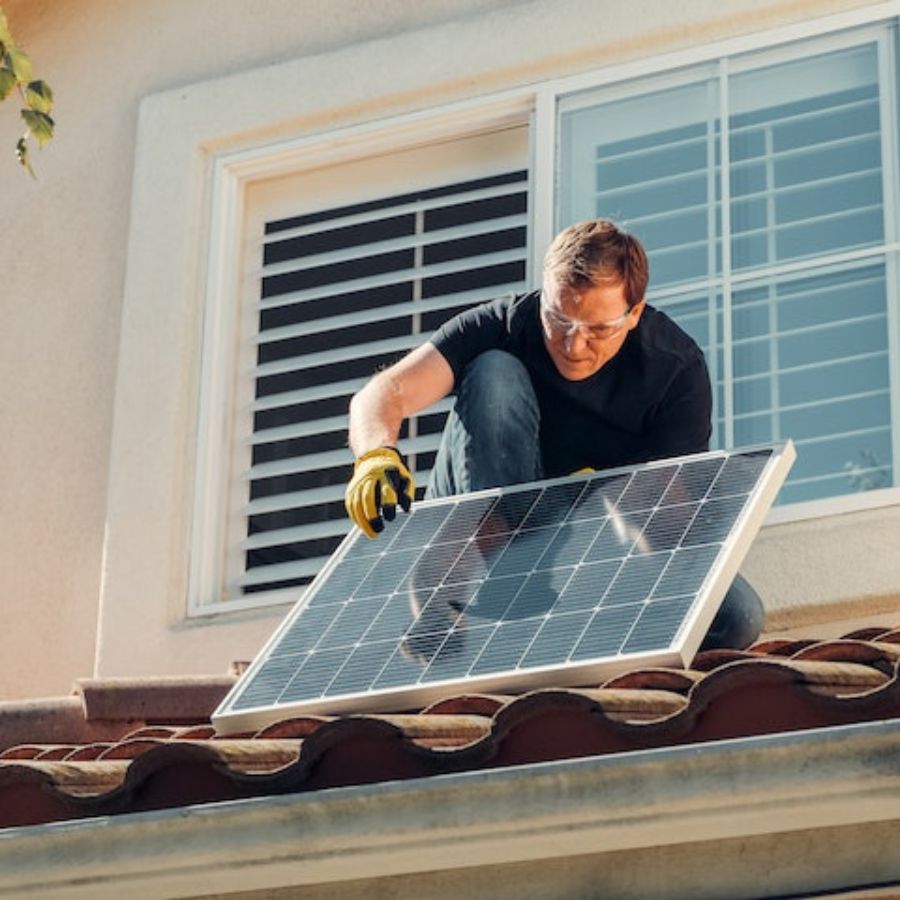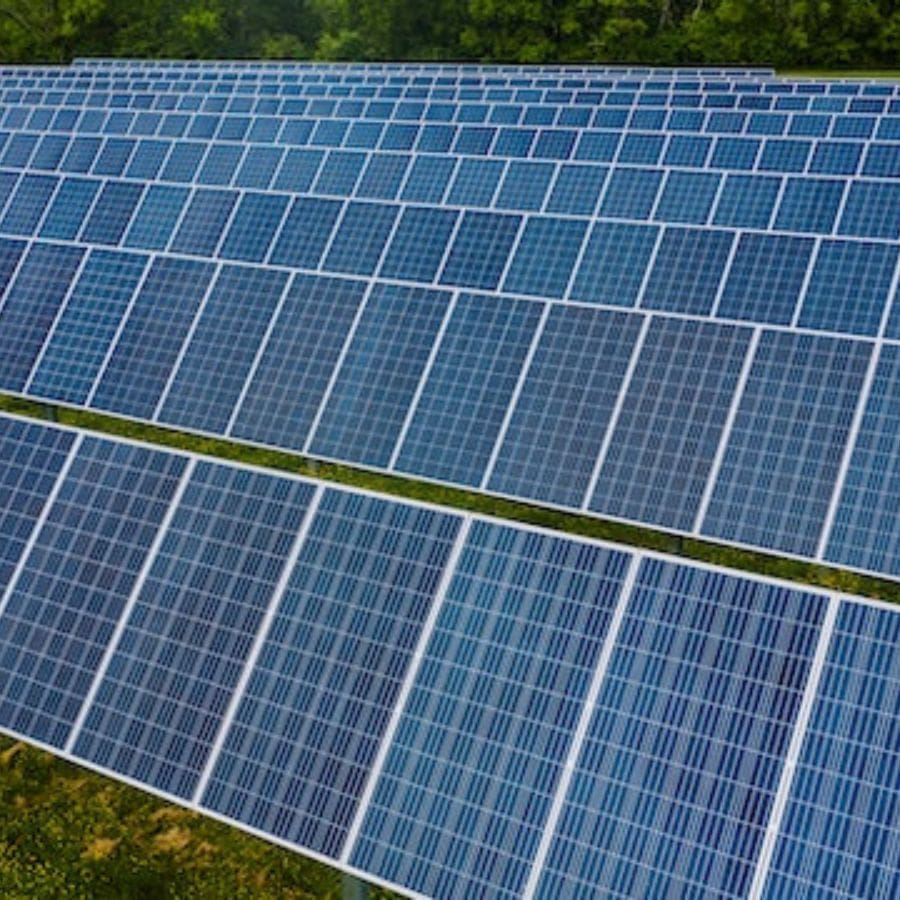How Many Solar Panels For 5KW
Solar power has emerged as a shining beacon of hope in the quest for a greener and more sustainable future. As individuals, communities, and nations strive to reduce their carbon footprint and transition away from fossil fuels, solar energy stands out as a reliable and environmentally friendly alternative.
If you’re considering installing a solar power system for your home or business, one common question you might have is: “How many solar panels do I need for a 5KW system?” Imagine what a 100-watt solar panel can run then do the math. Let’s explore this question and unravel the key factors that influence the answer.
Understanding the Basics – What is a 5KW Solar System?

Before delving into the intricacies, it’s imperative to grasp the essence of a 5KW solar system. Measured in kilowatts (KW), this metric embodies a solar system’s prowess in generating electricity. In essence, a 5KW solar system can harness the sun’s energy to yield 5 kilowatts of electrical power, factoring in diverse influences such as geographical location, weather conditions, and panel efficiency. These variables significantly shape the system’s ability to align with the average annual electricity consumption. As a result, unraveling the enigma of how many solar panels are necessary for this 5KW configuration hinges on comprehending and assimilating these foundational dynamics.
Factors Influencing the Number of Solar Panels:
Solar Panel Efficiency
Solar panel efficiency plays a pivotal role in energy conversion from sunlight. Panels with higher efficiency can generate greater electricity within limited space. This factor becomes crucial when considering a 5KW solar system, as it influences how many panels are needed to meet energy goals. Choosing from different panel efficiency levels allows you to strike the right balance, optimizing output while managing how much roof space is required. This decision-making process is essential for not only achieving desired energy production but also positively impacting your electricity bill.
Location and Sunlight
The solar panel’s performance connects to the sunlight your location receives. Unlike sun-deprived areas, regions with ample sunshine demand fewer panels to generate comparable electricity. Your latitude, climate, and shading concerns all influence solar panel efficacy. While determining how much space to allocate for panels, keep these factors in mind to optimize their output. Additionally, understanding the actual operating temperature of your solar panels can further impact their efficiency and influence electricity costs. You can harness maximum energy potential and reduce expenses by tailoring your solar approach to your area’s unique conditions.
Panel Wattage
Solar panels vary in wattage, a critical determinant of their energy output. The wattage directly affects how much power a panel can generate from sunlight. To achieve a 5KW solar system, you’ll need to carefully select panels with a combined wattage totaling 5KW or more. This choice can significantly influence your system’s effectiveness, determining whether it meets your energy goals efficiently.
Understanding panel wattage is essential because it corresponds to the energy output your panels provide during peak sun hours. The higher the wattage, the more electricity each panel can produce. You can strategically plan your solar installation by calculating how many panels with specific wattages are required to reach the 5KW mark. This calculation considers the wattage of individual panels and the number of panels needed to harness the available sunlight effectively. With the right panel wattage and configuration, your 5KW solar system can become a powerful asset in your journey toward sustainable and cost-effective energy generation.
Available Roof Space
When considering a 5KW solar system, the space on your roof becomes crucial in determining how many solar panels you can install. Limited roof space may require a strategic approach to maximize electricity production. Higher-efficiency solar panels become a valuable option, as they generate more power per square foot.
Choosing higher-efficiency panels can enable you to achieve the desired 5KW solar system output with fewer panels. These panels can convert a larger portion of sunlight into electricity, allowing you to generate more power within the available area. Again, this becomes especially beneficial if you have space constraints on your roof but still want to harness substantial solar energy.
Working with solar experts who can evaluate your roof’s dimensions and recommend the optimal panel type and configuration is essential. By carefully selecting solar panels based on available roof space, you can strike a balance between energy production, aesthetics, and the goals of your 5KW solar system. This way, you ensure that your solar investment is efficient and practical, regardless of your roof’s limitations.
Orientation and Tilt
When planning a 5KW solar system, the orientation, and solar panels’ tilt angle wield considerable influence over their efficiency. Optimal energy production is achieved when panels face south and are at an ideal tilt angle. Panels angled toward the south capture the most sunlight throughout the day, ensuring consistent electricity generation.
Fine-tuning the orientation and tilt of your panels impacts the number of solar panels required to achieve your desired 5KW system. Panels oriented correctly receive a higher intensity of sunlight, allowing each panel to generate more power. As a result, you may need fewer panels to reach the targeted energy output.
The decision to optimize panel orientation and tilt should depend on your location and available roof space. Solar experts can provide insights into the best angles for maximizing energy production based on factors like latitude, shading, and local climate.
In looking for an efficient and productive 5KW solar system, remember that the right combination of panel orientation and tilt can substantially impact the number of panels needed. By capitalizing on sunlight’s full potential, you enhance energy output and optimize using available roof space, ultimately driving greater sustainability and savings.
System Losses
When estimating how many solar panels you need for a 5KW solar system, it’s vital to consider system losses. These losses occur due to various factors, including temperature fluctuations, wiring inefficiencies, and inverter losses. While all solar systems experience some degree of energy loss, the quality of components used in your system significantly influences the extent of these losses.
It’s crucial to account for these potential energy losses to achieve your targeted 5KW solar system output. Using high-quality solar panels, efficient wiring, and reliable inverters can minimize energy wastage and maximize the system’s overall efficiency. Besides, this efficiency directly impacts the number of panels needed to reach your desired energy production.
Solar experts recommend investing in reputable components and working with experienced installers who understand how to minimize system losses. By doing so, you ensure that your 5KW solar system operates at its peak performance and optimize the use of your solar panels, making the most of every ray of sunlight and enhancing the sustainability and cost-effectiveness of your solar investment.
Calculating the Number of Solar Panels

To estimate the number of solar panels required for a 5KW system, you’ll need to consider the factors mentioned above. Here’s a simplified formula to get you started:
Number of Panels = (System Capacity in KW) / (Panel Capacity in KW)
Assuming you choose standard 300W panels, the calculation would be:
Number of Panels = 5KW / 0.3KW (300W) = 16.67
Since you can’t install a fraction of a panel, you would typically round up to 17 panels. However, this calculation doesn’t account for system losses or the other influencing factors mentioned earlier.
Fine-Tuning the Calculation
For an enhanced and precise estimate, seeking the expertise of a professional solar installer or utilizing online solar calculators is highly recommended. These tools consider various factors, including geographical location, roof alignment, shading concerns, and other pertinent specifics. In addition, it results in a refined and accurate panel count.
For instance, if your locale basks in abundant sunlight, fewer panels with higher wattages might suffice to meet your 5KW system goal. Conversely, if your area grapples with shading issues, compensatory measures in the form of additional panels might be necessary to counteract diminished energy production.
The accuracy of the panel counts also profoundly affects the efficiency and effectiveness of your solar setup. By leveraging the capabilities of professionals or advanced calculators, you can craft a solar energy solution tailored to your unique circumstances. This dynamic approach ensures optimal energy output and also maximizes cost savings, bolstering the lasting impact of your 5KW solar system.
Conclusion
Embarking on the journey toward a 5KW solar system is an exciting step toward sustainable energy independence. However, the number of panels you need isn’t a one-size-fits-all answer. It’s a result of various factors unique to your location, available space, and energy needs.
By considering factors like solar panel efficiency, your location’s sunlight availability, panel wattage, and available roof space, you can arrive at a rough estimate of the number of panels required. It’s recommended to collaborate with solar experts who can analyze your specific circumstances for a more accurate assessment. Furthermore, you can design a system that maximizes energy production.
As solar technology advances, it’s becoming increasingly feasible for individuals and businesses to generate clean energy. Whether you’re motivated by environmental concerns, financial savings, or a combination of both, a well-designed 5KW solar system can play a pivotal role in shaping a brighter, greener future for later generations.


